
According to the 2007 national census, there are 7,500 Mursi, 448 of whom live in urban areas. Surrounded by mountains between the Omo River and its tributary, the Mago, the home of the Mursi, is one of the country's most isolated regions. Due to the climate, they move twice a year between the winter and summer. They herd cattle and grow crops along the banks of the Omo River.
The Mursi is considered to be one of the most feared tribes that still exist today. Living in an isolated area of the Lower Omo Valley in Ethiopia has equated to this community remaining inaccessible until a few y years ago. The unconventional journey to get to their current location reinforced their seclusion from the contemporary world. Centuries of isolation have enabled the Mursi tribe to reach the present day with almost completely unchanged traditions and rituals, in which I had the privilege of being immersed. One enduring ritual has been the adornment of numerous jewels and accessories that serve as both an aesthetic ornament and delineate an individual's social contacts.
For this tribe, body painting is performed for aesthetic appeal, symbolic representation, and as a tool to protect and heal themselves. Much like many other acts performed by the tribe, it was multi-purpose and rooted in tradition. Mursi is also known for their elaborate skin scarification and for wearing a lip plate. In the tribal culture of Mursi, there are two types of scarifications: kitchoga and riru: both different in purpose and meaning, with riru, for example, only reserved for men. Women carve their bodies to get this ornamental scar on the abdomen, chest, back, and arms; the practice begins at the age of puberty, when the appearance of the breast forms, and ends when a girl gives birth to her first child.
This story is from the {{IssueName}} edition of {{MagazineName}}.
Start your 7-day Magzter GOLD free trial to access thousands of curated premium stories, and 9,000+ magazines and newspapers.
Already a subscriber ? Sign In
This story is from the {{IssueName}} edition of {{MagazineName}}.
Start your 7-day Magzter GOLD free trial to access thousands of curated premium stories, and 9,000+ magazines and newspapers.
Already a subscriber? Sign In

IN THE SHIPYARDS OF DHAKA
A very large shipyard in Dhaka is located on the Buriganga River's banks, directly across Dhaka's old city.
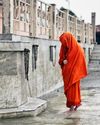
Aga Szydlik INDIA
A JOURNEY INTO THE LAND OF DIVERSITY, CULTURE, AND COLORS

SEBASTIAN PIÓREK EXPLORING Enjoyable LANDSCAPE
I retrieved the idea of nature closely linked to the field of human feelings.
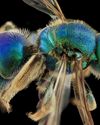
The Extreme Macro Photography of Bees
AN INTERVIEW SAM WITH, DROEGE
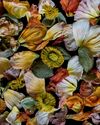
JEAN KAROTKIN GYMNOPEDIES
Gymnopédies, Karotkin's ongoing series of botanical portraits, takes its name from a trio of piano compositions by 19th-century French composer Erik Satie.
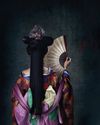
BUTTERFLIES IN LOVE WITH FLOWERS
I sometimes think Chinese art is not fully appreciated in the West. I was exposed to it growing up in Australia, although my fascination was more with calligraphy.

Lissa Hahn:
Hahn: HOW TO EVOKE A PAVLOVIAN RESPONSE IN HUMANS

AN EXCLUSIVE INTERVIEW WITH ELENA PARASKEVA
Elena Paraskeva is an internationally acclaimed, award-winning Conceptual Photographer and Art Director and, most recently, an official ADOBE instructor.

From a Living Hell to Heaven on Earth: the Inhumanity and Humanity of Humans
In a remote area of western Wisconsin, dogs and cats who otherwise would have ended up on death row are given a reprieve. They can now live out their lives in peace and comfort and with companionship at Home for Life (HFL), which was not afforded them outside the sanctuary's gates.
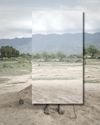
The Art of DISAPPEARING
In the classical proposal, indigenous people are usually the topic of discussion, but rarely do they have a hand in shaping it.